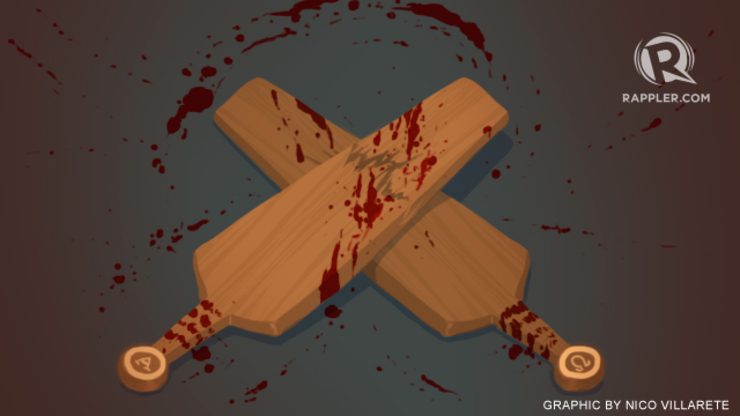SUMMARY
This is AI generated summarization, which may have errors. For context, always refer to the full article.

The nipa hut style bungalow was spacious and airy but worn down; its upkeep was clearly not on anyone’s priority list.
The double bed would have been welcoming but it was lumpy, lopsided, and very much slept in.
The TV may have had cable at some point, but was now just transmitting static.
The bathroom offered privacy but could not promise hygienic relief.
I did not know what maximum security prison in Muntinlupa would be like. I did not know what to expect, but it was not this – this place where everything gave off a feeling that it did not quite belong there.
Outside was a karaoke area and possibly even a sari-sari store. Since it was visiting day, family members and inmates were roaming around the premises.
The nipa hut was the spot of former Congressman Romeo Jalosjos. It was his private residence while serving his sentence for statutory rape and acts of lasciviousness. When he was released, it became the tambayan and hang out of the other inmates.
It was in this bungalow over hot steamy chopsuey, fried chicken, and rice that magically appeared for lunch that I, along with Sam, a Chinese journalist from the Xinhua News Agency were conducting interviews. We were assigned to do a story about a fashion show featuring designs made by inmates.
A man who was not formally introduced to us, welcomed us and gave us a briefing about prisoner rehabilitation policies and related activities such as the fashion show.
He sat and spoke with a quiet authority and eloquence.
Sam and I just assumed that he was a warden and began asking questions and taking down notes.
I found it odd when he asked me what school I graduated from but didn’t give it much thought when I answered, “UP.”
“O, talaga? Ano student number mo?” he asked, invoking the sign of familiarity among UP students. (Really? What’s your student number?)
I responded, but was beginning to wonder where this questioning was going.
“O, nandoon ka noong case namin. Case naming yun kay Dennis. Natatandaan mo pa?” he asked. (You were there during our case. The one of Dennis. Do you still remember?)

“Yes,” incapable of anything more than one word replies.
I still remembered that day very vividly. There was no social media then, but the news spread like wildfire.
There was a fraternity rumble in Beach House in the Sunken Garden. Members of Sigma Rho fraternity were eating lunch when they were attacked by masked men with baseball bats and lead pipes.
One graduating Public Administration student, Dennis Venturina, was killed.
All the talk in the tambayans was about Dennis: how he was about to graduate with honors, how he was such a nice guy; and how he had just gotten a scholarship to study abroad. The tambayans then were the epicenters of public information, indignation, and commiseration.
There was talk about an alleged fraternity hierarchy and how guys like Dennis were recruited for their academic excellence and their leadership potential. These were the boys who were going to hold public office someday and bring honor and prestige to the fraternity in the likes of illustrious graduates like Ferdinand Marcos and Ninoy Aquino.
Then there were boys who were recruited to be the frontliners, the soldiers who fought and started the campus rumbles.
Who knew if any of it was true? Who knew why campus frat wars started in the first place? We only knew that a fellow UP student was dead when he should not have been.
Nothing made sense that day in 1994.
And in 2009, in this nipa hut somewhere in the premises of New Bilibid Prison, nothing made sense either.
The man who had given me and Sam a briefing was Warren Zingapan – one of the 5 members of the Scintilla Juris fraternity sentenced to life imprisonment for the murder of Dennis Venturina and the attempted murder of other Sigma Rho members.
While serving out his sentence, Zingapan also served as the president of the Lamb of God, an organization started by Jalosjos for the poor, sick, and elderly inmates.
As soon as we got in the car, Sam wasted no time in asking me, “So Ana, how do you know that guy?”
I told him everything just as I remembered it. I told him how – though I did not know Dennis – I had wanted so much to condole with his mother.
Later that night, I googled Warren Zingapan and other details of the Dennis Venturina case.
The sentence of life imprisonment was handed down around the same time that Zingapan topped the Civil Engineering licensure exam.
No, nothing made sense that day in 1994.
Neither did anything that day in 2009.
Except that things that weren’t supposed to belong in New Bilibid Prison kind of did. –Rappler.com
Ana P. Santos is a Rappler columnist and former UP student. She was moved to write this piece because there have been too many young men who have died senseless deaths because of fraternity hazing and campus frat wars. As she read on Twitterverse, “fraternity violence is the Philippine equivalent of school shootings.”
Last month, the Supreme Court upheld the life sentence of those convicted in the Venturina case.
Add a comment
How does this make you feel?
There are no comments yet. Add your comment to start the conversation.